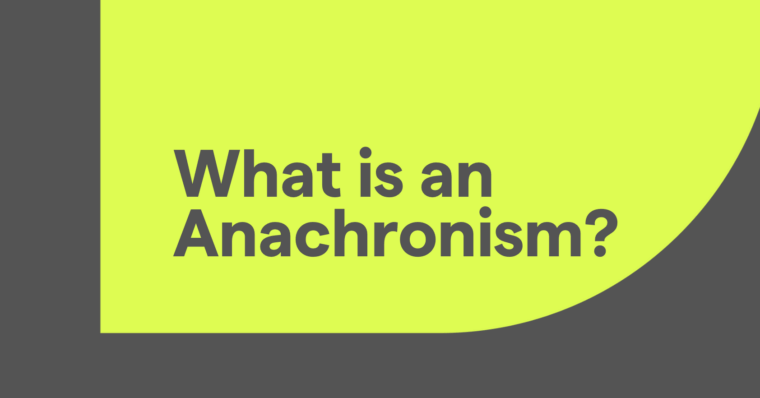
Synthesis essays are common assignments in both high school and university, but that doesn’t mean they’re easy or that everyone knows how to write them. In this guide, we discuss everything you need to know in order to write one yourself. We talk about synthesis essay structure and offer some general tips, plus we clarify any confusion between a synthesis essay versus an argumentative essay.
What is a synthesis essay?
A synthesis essay is a type of essay that combines points, data, and evidence from multiple sources and turns them into one idea that the writing revolves around. In other words, the writer synthesizes their own idea using other sources’ research and points. Usually, synthesis essays are a type of analytical essay, but they have crossover with other types of essays as well, such as argumentative essays.
The central idea in a synthesis essay is represented by the thesis statement, a sentence that succinctly explains the main point of the essay. In a synthesis essay, this “new” idea usually consolidates the main points and/or findings of other sources.
Synthesis essay structure
Creating a solid synthesis essay structure is one of the hardest parts of writing a synthesis essay. Unlike most other essay outlines, an outline for a synthesis essay has to include points from multiple sources, and such combinations don’t always have a logical or chronological sequence. To help you out, here are three strategies for creating a synthesis essay structure and sample outlines that you can use as templates.
Synthesis essay structure 1: By topic
The first kind of synthesis essay structure involves discussing each topic individually, mentioning each source’s perspective on it, and then moving on to the next topic. This approach lets you compare or join together points made by different sources about the same specific topic.
Structuring your synthesis essay by topic works best for more complicated ideas with different aspects that should be explored individually.
Example outline:
I. Introduction A. Thesis statement
II. Topic 1 A. Source A discussing Topic 1 1. A point or piece of evidence/data from Source A about Topic 1 2. Another point or piece of evidence/data from Source A about Topic 1 3. [Etc.]
B. Source B discussing Topic 1 1. A point or piece of evidence/data from Source B about Topic 1 2. [Etc.]
III. Topic 2 A. Source A discussing Topic 2 B. [Etc.]
IV. Topic 3 A. [Etc.]
[You can keep going like this with as many topics as you need.]
V. Conclusion A. Revisit thesis statement
Synthesis essay structure 2: By source
Alternatively, you can organize your synthesis essay structure by source: You discuss the main points of one source together and then move on to another source. This approach lets you compartmentalize the main points according to where they come from but ultimately bring together the main points from different sources.
Structuring your synthesis essay by source works best when you want to emphasize the sources themselves over the points they make. For example, if you were using this type of structure for an argumentative essay, you might want to fully discuss the source you’re refuting before making your counterargument.
Example outline:
I. Introduction A. Thesis statement
II. Source 1 A. Source 1 discussing Topic A 1. A point or piece of evidence/data from Source 1 about Topic A 2. Another point or piece of evidence/data from Source 1 about Topic A 3. [Etc.]
B. Source 1 discussing Topic B 1. A point or piece of evidence/data from Source 1 about Topic B 2. [Etc.]
III. Source 2 A. Source 2 discussing Topic A B. Source 2 discussing Topic B C. [Etc.]
IV. Source 3 A. [Etc.]
[You can keep going like this for all your sources.]
V. Conclusion 1. Revisit thesis statement
Synthesis essay structure 3: Combine
The synthesis essay structures above are by no means set in stone. You’re free to adapt or modify them however you need and can even combine them.
For example, what if there’s a special source that stands out from the others? You could begin your synthesis essay by discussing each topic individually so that your reader understands the issue. Then you could switch it up and include a section just for that one special source, explaining that source’s stance on the previously discussed topics.
3 tips for writing a synthesis essay
1 Come up with a strong thesis statement
As mentioned above, a thesis statement is a single sentence that briefly explains the main point of your essay. In a synthesis essay, the thesis statement should effectively bring together the ideas and points from multiple other sources.
Part of writing a strong thesis statement comes from choosing your essay topic. Pick a topic that is broad enough to have sufficient research and enough other sources discussing it but specific enough that you can cover everything.
As for writing the actual thesis statement, a helpful method is to phrase your topic as a question and then answer it. The answer could be a good start to your thesis statement sentence. For example, let’s say your topic is how Denmark came to be first in clean energy. You could phrase the question and answer as:
Q: “Why is Denmark the leading country in renewable energy?”
A: “Denmark is first in clean energy thanks in part to energy conservation from district heating, combined heat-and-power stations, and its use of small, locally based power plants instead of larger ones.”
That answer could double as your thesis statement and mentions some of the other types of sources you use in your essay.
2 Read all the sources carefully
A synthesis essay is only as good as its sources. The nature of a synthesis essay is to build on its sources, so you need to choose the best ones and understand each of them thoroughly.
Make sure you comb through your sources so you don’t miss a good point or piece of evidence you could use in your essay. It helps to come up with your thesis statement early on so you can look for points related to it when you’re reading.
3 Write a gripping introduction
One of the keys to any good essay, synthesis or not, is a strong opening. This is partially determined by your thesis statement, but the other sentences in your introduction also make a big impact.
For starters, you can learn how to write a hook. In writing, a hook is something that grabs the reader’s attention and makes them want to keep reading. Hooks can essentially be anything interesting. Some common strategies for writing hooks include using personal anecdotes to create an emotional connection or providing exciting facts/statistics that the reader might not know.
Additionally, the introduction should also explain the scope of your topic and set the scene for people who aren’t familiar with it. The goal of the introduction is to prepare the reader for what follows so that afterward you can transition straight into making your points.
Synthesis essay vs. argumentative essay
Synthesis essays are often compared to argumentative essays, which attempt to refute, debunk, or criticize existing ideas or other research. The truth is that the two are not mutually exclusive. Although synthesis essays tend to be analytical or expository, they can also be argumentative.
A synthesis essay is any essay that combines ideas from multiple sources to create a new unified idea. If that new idea is a rebuttal to a preexisting idea and the entire essay is written as a critique, then the essay would be both synthesis and argumentative.
Synthesis essay FAQs
What is a synthesis essay?
A synthesis essay is a type of essay that combines points, data, and evidence from multiple sources and turns them into one unified idea. In other words, the writer synthesizes their own idea using other sources’ research and ideas.
What is a good synthesis essay structure?
Traditionally, the common approaches to creating a synthesis essay structure are organizing by topic or organizing by source. The former means you discuss each source’s perspective on a topic before moving to the next topic; the latter means you discuss one source’s stance on each topic and then move to another source. You can also create a hybrid structure of the two for particular subjects.
What is the difference between a synthesis essay and an argumentative essay?
Synthesis essays are often contrasted with argumentative essays, but the truth is that the two are not mutually exclusive. For example, an argumentative essay can use the format of a synthesis essay—combining points from multiple sources to form a new unified idea—in order to refute a preexisting idea.





